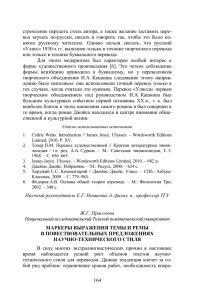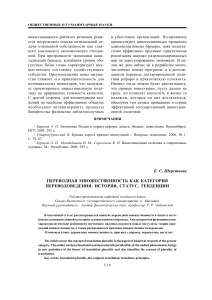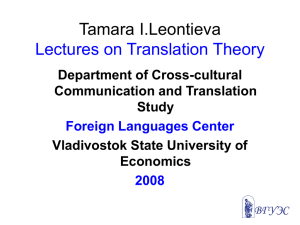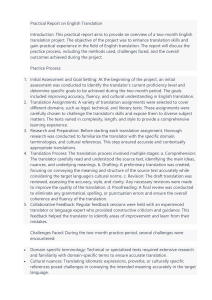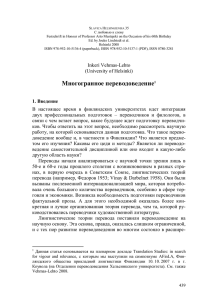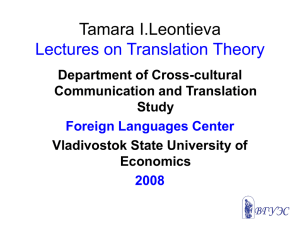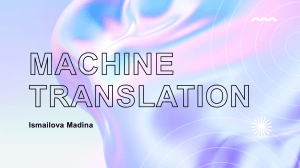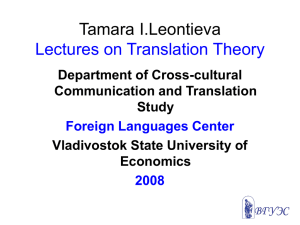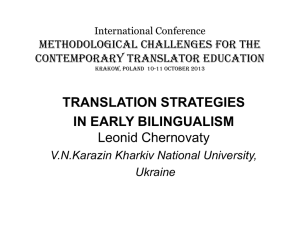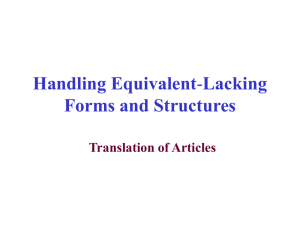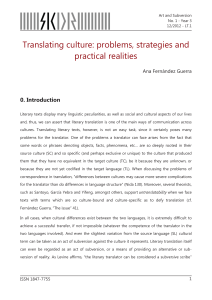The Theory of Non
реклама
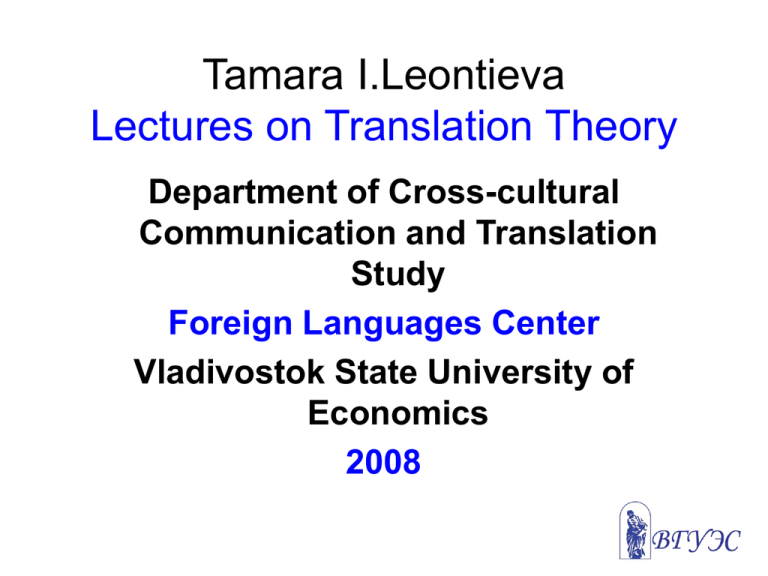
Tamara I.Leontieva Lectures on Translation Theory Department of Cross-cultural Communication and Translation Study Foreign Languages Center Vladivostok State University of Economics 2008 The Theory of Non-Equivalence Translation as process and translation as result Translation as process and as result Translation as process is connected with the category of methods of translation, separate techniques and transformations. Translation as result may be regarded from the point of view of another category - that of equivalence of translation. Equivalence in Translation 1. A sum of formal components: sounds, words, links between the elements of the speech act making the structure of the text. Equivalence in Translation 2. A sum of semantic components made of lexical and grammatical meanings within a text. Equivalence in Translation 3. A sum of quanta (blocks) of semantic information of different value. What does an ideal translation present? The combination of the three components - but can it be achieved? - Only in theory! What happens in practice? A translator combines word-for-word (or literal) translation and free translation with regard to the norm of the target language (TL). Literal Translation a) spoutnik, perestroika b) All cats are grey in the dark. c) The policy of big stick. Free Translation a) Первый блин комом. Better luck next time. b) По мне уж лучше пей, да дело разумей. As for me, I’d let them drink all day If only they could play. Non-equivalence theory • The ST and TT do not correspond in a) the quantity and quality of information; b) the formal means of expressing the same information in the two languages, c) semantic components describing the same situation. • As a result there is lost or acquired information. Graphic Presentation of Lost or Acquired Information Noncoinciding elements of information Дж. Миллер - + One circle: ST information The other: TT information They do not coincide Find lost and acquired info Он произнес последние слова с пафосом и вышел. He left our house when he finished speaking. Comparative analysis - 1 SS:Правительство не раз предлагало при условии вывода иностранных войск из южной части страны заключить мирное соглашение между Югом и Севером о ненападении и сократить численность обеих армий до 100 тысяч человек. TS: Правительство все делало для того, чтобы заключить соглашение с Югом о ненападении и сократить численность обеих армий при условии вывода в установленные сроки иностранных войск из южной части страны. Comparative analysis - 2 SS: Следующее заседание состоится 15 декабря. TS: The next sitting will be held on December 15 at 11 o’clock a.m. Comparative analysis - 3 SS: Вчера национальное собрание закончило рассмотрение финансового бюджета на 2005 год в первом чтении. TS: Yesterday the National meeting finished discussing the financial budget for 2005. Rules of Comparative Analysis 1. Only dissimilarities in semantic information are pointed out. 2. All non-coinciding information is divided into obtained or lost. 3. Non-coinciding information is divided into: key info, unique info, additional, specifying, repetitive or zero info. LITERATURE 1. Миньяр-Белоручев.Р.К. Теория и методы перевода. - М.: Московский лицей, 1996. - С.111-132. 2. Прошина З.Г. Теория перевода … Владивосток: Изд-во ДВГТУ, 1999. С.23-24. 3. Чужакин А.П. Мир перевода -2. - М.: Валент, 1977. - С.19-22.
